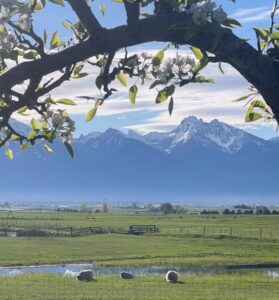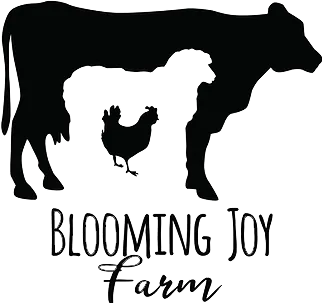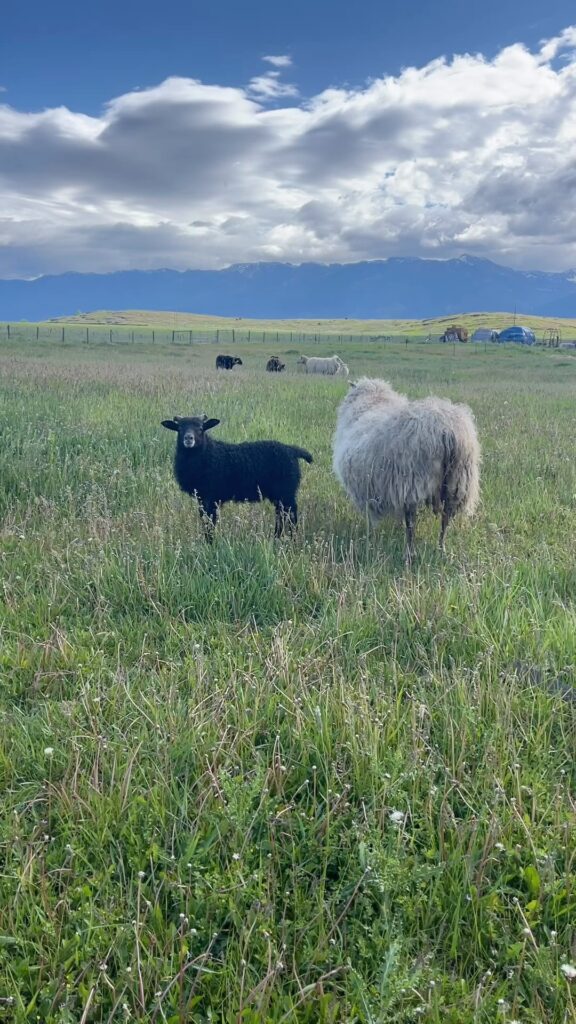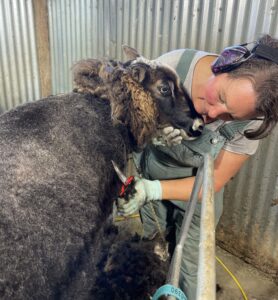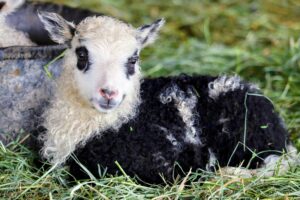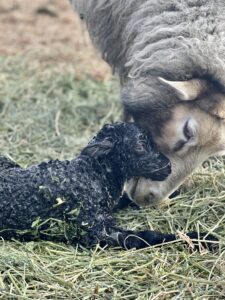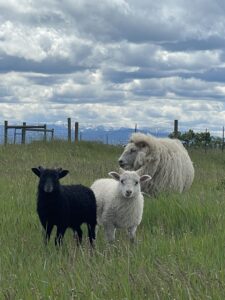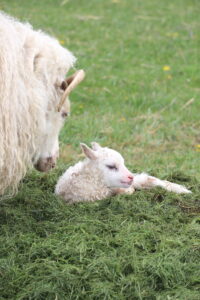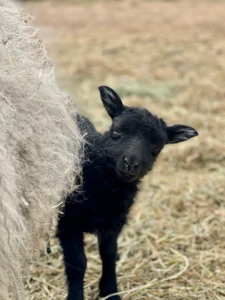Spring arrives with a flurry of new life at Blooming Joy Farm. As the snow melts and the pastures begin to blush green, we find ourselves deep in the heart of lambing season—a time filled with anticipation, midnight barn checks, and the gentle rhythm of new beginnings.
It’s a season that’s both tender and intense. Each birth is a small miracle, each lamb a reminder of nature’s resilience and grace. And then, just as quickly as it begins, lambing is complete—and the tempo of the farm shifts once again. We move from midnight checks and lamb care to open pasture and shearing the winter coats.
Let’s take a walk through the pasture together, and I’ll tell you about this beautiful transition—from lambing to grazing—and how we shepherd our flock through these seasonal milestones.
The Sweet Chaos of Lambing Season
Lambing season usually begins for us in March or early April, depending on how the year has unfolded. It’s a time when the barn becomes the heart of the farm. We check on expectant ewes—day and night—watching for signs of labor, offering a helping hand when needed, and making sure each lamb gets a strong, warm start.
Some years are smooth, with easy births and strong twins across the board. Other years bring surprises—breech lambs, chilled bodies in the early morning, or the heartbreak of losing a little one despite your best efforts. Through it all, we’re guided by the sheep themselves, who carry the wisdom of generations in their instincts. Every year I am amazed by the great mothering instincts that the Icelandic ewes have. They are so attentive and protective of their little ones.
Shearing: A Clean Start for Summer
Once the last ewe has lambed, we shift gears and prepare for another critical seasonal task: shearing. The winter coats that have kept our Icelandic sheep warm through Montana’s long cold months must now come off to keep them cool and comfortable through summer.
Shearing is more than just a haircut. It’s an act of stewardship. Removing their heavy fleeces prevents overheating, discourages parasites, and gives us the chance to do a full health check on each sheep—inspecting hooves, body condition, and skin health.
And of course, it’s the beginning of another cycle: fiber season! We sort and skirt fleeces immediately, preparing them for the mill. There’s something magical about knowing that the same lambs we helped bring into the world will, a year from now, be growing beautiful wool for yarn we can share.
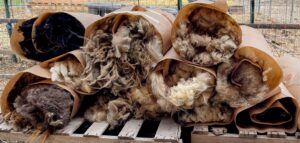
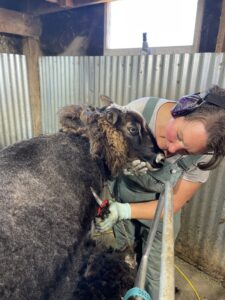
Growing Strong on Green Pasture
With the flock sheared and the lambs gaining strength, we finally open the gates to the pasture. This is the moment we’ve been waiting for—the fields dotted with playful, healthy lambs nibbling at fresh spring grass, their mothers grazing nearby. The sun is warm, the breeze smells like clover, and the work of spring gives way to the steadiness of summer.
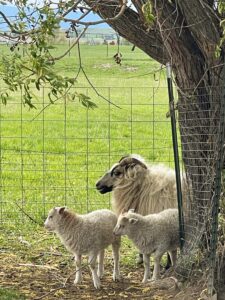
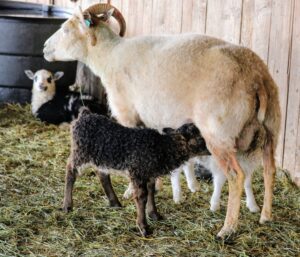
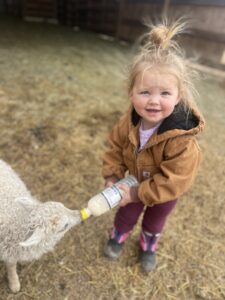
We begin our version of “lamb watch,” which is really just a daily practice of observation and connection. Each day we walk the pastures, watching for signs of thriving:
- Bright, clear eyes
- Steady weight gain
- Playful energy and strong flock behavior
- Solid nursing
- Healthy, resilient hooves and fleece
We also offer free-choice minerals and kelp—essential nutrients that support fast-growing lambs and lactating ewes. Our Icelandics do especially well on kelp, and we notice stronger immunity and better parasite resistance when it’s part of their diet.
Our sheep and lambs are solely pasture-raised. We do not supplement with grain—just momma’s milk and fresh grass in the spring and summer, and quality hay in the late fall through early spring. This natural diet supports healthy rumen development in lambs and aligns with our commitment to regenerative, holistic farming practices.
If you’ve never seen a lamb run for the sheer joy of it, you’re missing something special. The best part of this season is simply sitting on an overturned bucket at the edge of the pasture, watching the lambs at play.
They form mini gangs, zipping around the field in tight circles, leaping over clumps of grass, bouncing sideways with pure delight. There’s often one bold lamb who leads the charge—usually the firstborns—and the rest follow in a wave of woolly motion.
They’re also learning. Mimicking their mothers, lambs begin nibbling grass at just a few days old. By the time they’re a few weeks old, they’re chewing cud right alongside the grown sheep. It’s a remarkable thing to watch—how quickly they adapt, how instinct leads the way.
The Big Picture: Why This Season Matters
This period—from lambing to shearing to grazing—is a foundational part of our year. It sets the tone for the rest of the farming season, laying the groundwork for healthy animals, fertile pastures, and a productive year.
Strong lambs mean healthy ewes, which means good milk supply, strong flock genetics, and eventually, quality fiber and meat. And grazing carefully, through rotational pasture management, means our fields remain healthy and productive for years to come.
This is regenerative farming in motion. Every decision made in these weeks echoes across the seasons to come.
Looking Ahead with Gratitude
Now, as June brings longer days and warm evenings, we settle into a quieter rhythm. The lambs are growing stronger. The ewes are relaxed and content. The fleeces are off, the garden is planted!
But this moment, right now, is one we always treasure. It’s the peaceful in-between. A time of observation, of care, and of quiet joy.
“These sunny days of lambs on pasture remind us why we do what we do. It’s hard work, yes—but it’s also full of small miracles.”
